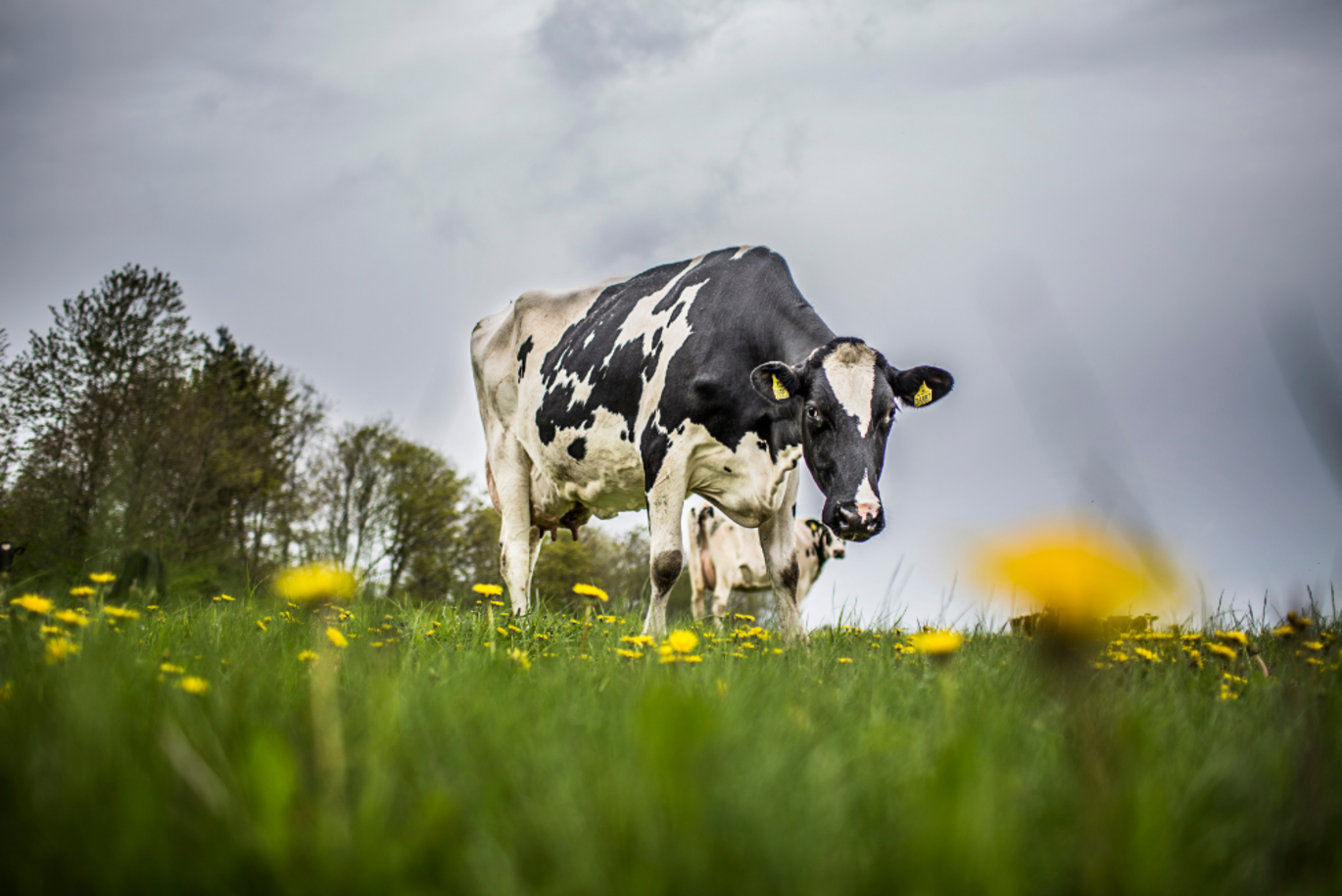Optimal longevity of organic dairy cows
Researchers from Aarhus University and University of Copenhagen are collaborating with Velas and SimHerd to develop a model that can predict the optimal longevity of organic dairy cows.

Longevity? Isn’t that something about humans living a long and healthy life? Yes, and for livestock it reflects their productive lifespan.
For dairy cows, longevity is defined as the timespan from first calving to culling. Now, the optimal longevity of organic dairy cows is to be investigated. The project is called "Optimal longevity in organic dairy cows" (ØKO-HOLDBAR).
Longer life, less climate impact
The new project is groundbreaking in several ways.
Firstly, there is virtually no knowledge about the longevity of organic dairy cows. Secondly, the researchers will not limit themselves to production economics as has been done so far.
They will also account for the impact on climate and animal welfare. “The first two years of a cow's life, until she calves for the first time, she does not produce milk, but she still eats, defecates, and urinates. These two years can be viewed as unproductive.
"It is a cost for the farmer, and, at the same time, the cow emits greenhouse gases," explains professor Peter T. Thomsen, who leads the project.
“The longer a cow lives and produces milk, the more time she will have to 'pay back' for the unproductive period. Therefore, the climate footprint per kilogram of milk becomes smaller the older the cow gets.”
Better economy, better welfare, and less climate impact
However, the calculation is not that simple. As age increases, so do health issues.
Thus, there is a need to develop a new model for calculating the optimal longevity. This model will not only be based on economic productivity but should also incorporate the climate impact as well as health and welfare of the animals.
All these parameters must be included in the model and adapted to the conditions of each individual farm.
“Optimal longevity is not necessarily about making the cow live as long as possible," explains Peter T. Thomsen.
All things being equal, the climate footprint per liter of milk decreases as the cow ages. The problem is that the incidence of diseases also increases with age, and this affects animal welfare. For organic farmers, diseases is a significant economic burden.
Treating diseases is more expensive, and there are greater restrictions on the sale of milk from treated cows compared to conventional cows. Therefore, one cannot expect optimal longevity to be the same in organic and conventional herds.
“It is very likely that the new tool will also be applicable in conventional herds,” says Peter T. Thomsen, adding, “but in the project, it is specifically targeted towards organic herds.”
What are consumers' expectations?
Consumers want livestock production to affect the environment as little as possible and animals to have good welfare. The project investigates consumers' attitudes towards the longevity of organic dairy cows.
“Consumers may believe that organic cows typically live longer than conventional cows. That is just not the case at the moment,” says Peter T. Thomsen.
The study, led by professor Peter Sandøe and associate professor Thomas Bøker Lund from the University of Copenhagen, aims to provide a foundation for better and more focused communication with consumers.
Future housing systems
The project also plans to develop a concept for the design of future housing systems for dairy cows. Hoof and leg disorders together with accidents are the primary reasons for mortality in dairy cows.
Researchers – in collaboration with dairy farmers - will therefore create a future scenario where cow barns are built and designed to better consider both economic factors, animal welfare, and climate.
By designing housing systems that reduce the risk of accidents, injuries, and hoof problems, it will be possible to increase cow longevity.
Collaboration: The direct path to practice
The project is a collaboration between Aarhus University, University of Copenhagen, the consulting company Velas, and the software company SimHerd.
This collaboration ensures that the pathway to applying the new knowledge is shorter. The researchers behind the project believe there are several significant perspectives: First, it is possible to reduce the climate footprint per kilogram of milk produced.
Second, it will improve the economy for farmers, and third, it will enhance animal welfare. All of this contributes to increasing social acceptance of milk production in Denmark.
Additional information | |
We strive to ensure that all our articles live up to the Danish universities' principles for good research communication (scroll down to find the English version on the web-site). Because of this the article will be supplemented with the following information: | |
External funding | ØKO-HOLDBAR is part of the Organic RDD 10 program, coordinated by ICROFS (International Centre for Research in Organic Food Systems) in collaboration with the Green Development and Demonstration Programme (GUDP) under the Ministry of Food, Agriculture and Fisheries. |
External collaborators | Copenhagen University Velas SimHerd |
External commenting | None |
Conflicts of interest | None |
Read more |
|
Contact information | Peter T. Thomsen, PTT@anivet.au.dk |
